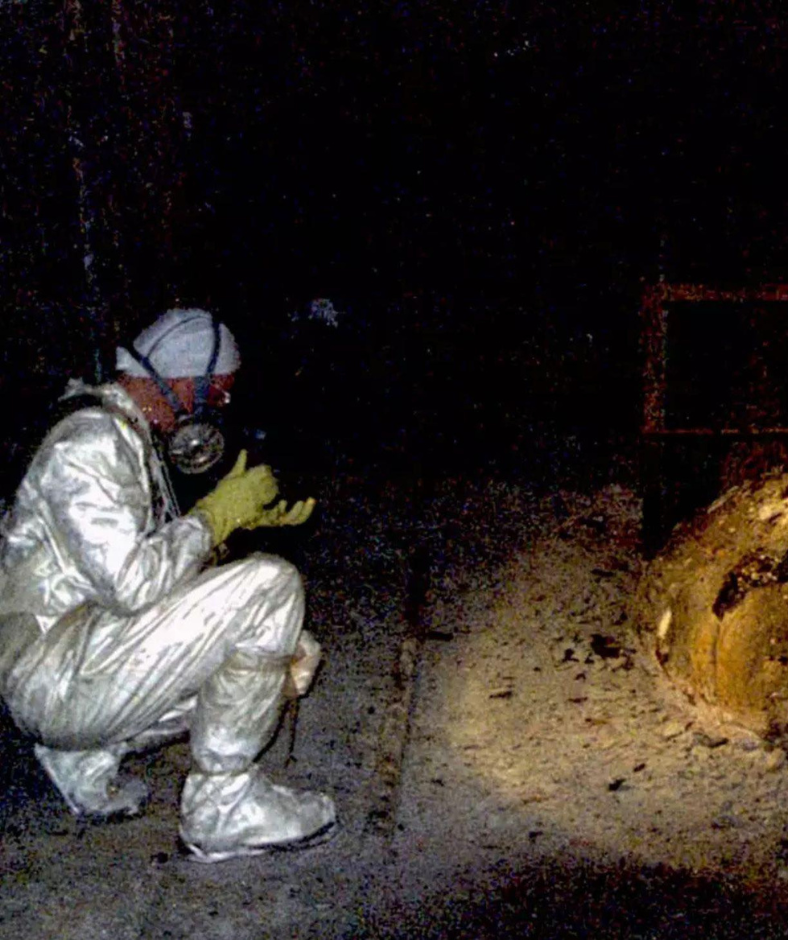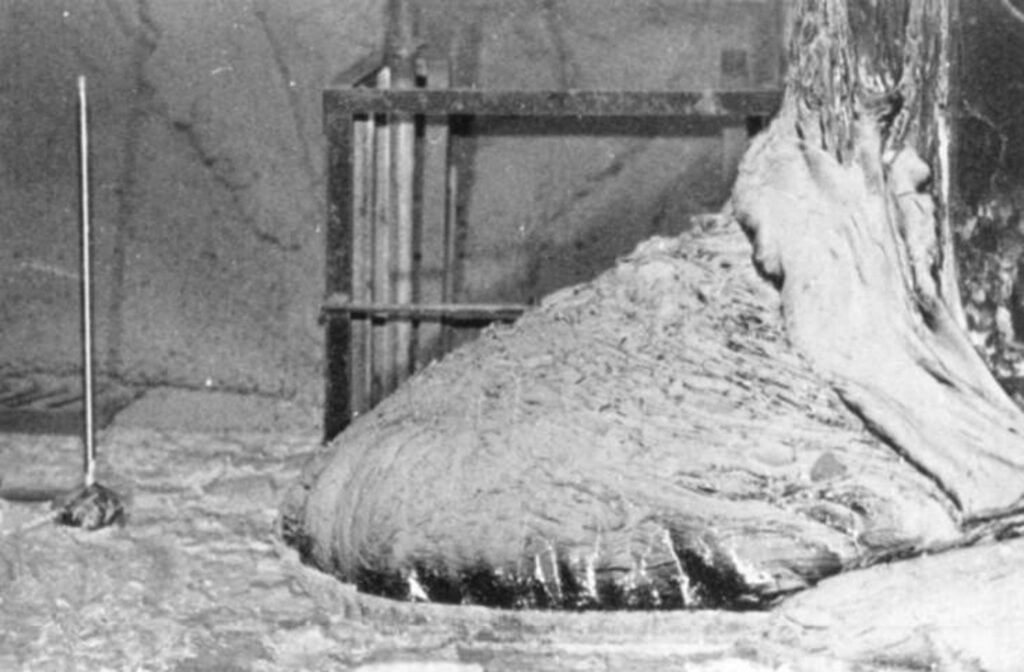In the vast expanse of our world, there exists an object so deadly that it can take a life in just two days. This is the chilling reality of the “Elephant’s Foot,” a radioactive mass discovered in the basement of the Chernobyl nuclear power plant in Ukraine.
The Elephant’s Foot is a byproduct of the Chernobyl disaster, which occurred almost four decades ago. This molten mass, composed of melted nuclear fuel, sand, and concrete, is a stark reminder of the catastrophic events that unfolded on that fateful day. The Foot’s name is derived from its elephant-like wrinkled appearance, a feature that adds to its haunting and ominous presence.

Even today, the Elephant’s Foot continues to pose a severe threat to anyone who dares to approach it. In the 1980s, radiation levels at the Foot were measured at a staggering 10,000 roentgens per hour. This level of radioactivity is so high that it can be fatal within just a few minutes of exposure. Over the years, the radiation has declined, but it remains dangerously high, with the Foot still emitting enough radiation to be lethal within two days of close contact.
The Elephant’s Foot is not the only deadly relic left behind by the Chernobil disaster. Deep in the forest, there lies another chilling remnant – the Claw. This abandoned tool, used to handle the highly radioactive materials that were released during the accident, is still emitting over 950 microsieverts of radiation per day, making it a hazardous and potentially deadly encounter.
The Elephant’s Foot and the Claw serve as haunting reminders of the immense power and devastating consequences of nuclear technology. These relics, frozen in time, continue to pose a threat to anyone who dares to approach them, a testament to the enduring legacy of the Chernobyl disaster.
The events that unfolded at Chernobyl’s Reactor 4 were truly horrific. When the reactor exploded, it released a massive amount of radioactive material into the atmosphere, blowing the lid off the reactor vessel and scattering debris across the nearby rooftops. These rooftops, measuring radiation levels in the tens of thousands of roentgens, were once the most lethal places on Earth, posing an immediate and severe threat to anyone who dared to venture near them.
In the aftermath of the disaster, the Claw played a vital role in the cleanup efforts. This tool was used to handle the intensely radioactive materials that had been released, including the graphite, fuel rods, and other debris that had been blown out of the reactor. The Claw’s involvement in this dangerous work has made it a symbol of the sacrifices and heroism displayed by the Chernobyl cleanup crews.

The Elephant’s Foot remains one of the most hazardous objects on the planet, a testament to the lasting impact of the Chernobyl disaster. Its sheer radioactivity is enough to cause severe radiation sickness and death within a matter of days, a sobering reminder of the immense power and danger of nuclear technology.
Over the years, the radiation levels at the Elephant’s Foot have gradually decreased, but the pace of this decline is painfully slow. It took a decade for the first photographs of the molten mass to be taken, as the radiation levels were simply too high for anyone to safely approach. Even today, the Foot remains highly radioactive, and it is anticipated that it will continue to pose a serious threat for tens of thousands of years to come.
The Elephant’s Foot and the Claw are not just relics of the Chernobyl disaster; they are symbols of the immense power and danger of nuclear technology. These objects serve as a stark reminder of the consequences of a nuclear accident, and the lasting impact it can have on the environment and human health. As we continue to grapple with the legacy of Chernobyl, the Elephant’s Foot stands as a haunting testament to the fragility of our world and the need to treat nuclear power with the utmost care and caution.
The Elephant’s Foot and the Claw are chilling reminders of the devastating power of nuclear technology. These relics of the Chernobyl disaster continue to pose a serious threat to anyone who dares to approach them, a testament to the lasting impact of this catastrophic event. As we reflect on the lessons of Chernobyl, we must remain vigilant and committed to ensuring the safe and responsible use of nuclear power, lest we risk creating more deadly legacies that will haunt us for generations to come.


